High-fly Sawfish Conservation Outreach
Effective and thorough community outreach and environmental education are prerequisites of successful species conservation. We all know that most of the problems of wildlife conservation are due to human activity: logging, fishing, coastal development, hunting, pollution, and other human activities impact habitats and populations sometimes driving the latter towards extinction. It follows that conservation is mostly a problem of management of humans and their activities, and this is where outreach and environmental education play key roles in helping counteract negative human activities that impact wildlife and wild places.
Last October, 17th we celebrated International Sawfish Day with a big bang, attracting people to our 2-day festival of environmental education focused on sawfishes by elevating a gigantic (7-meter) sawfish balloon in front of the Veracruz Aquarium. For this, I called the Veracruz Aquarium and Mar de áaKay (a conservation NGO in Mexico City) to join my organization Océanos Vivientes A. C. and put together the largest celebration to date for sawfishes in Mexico.
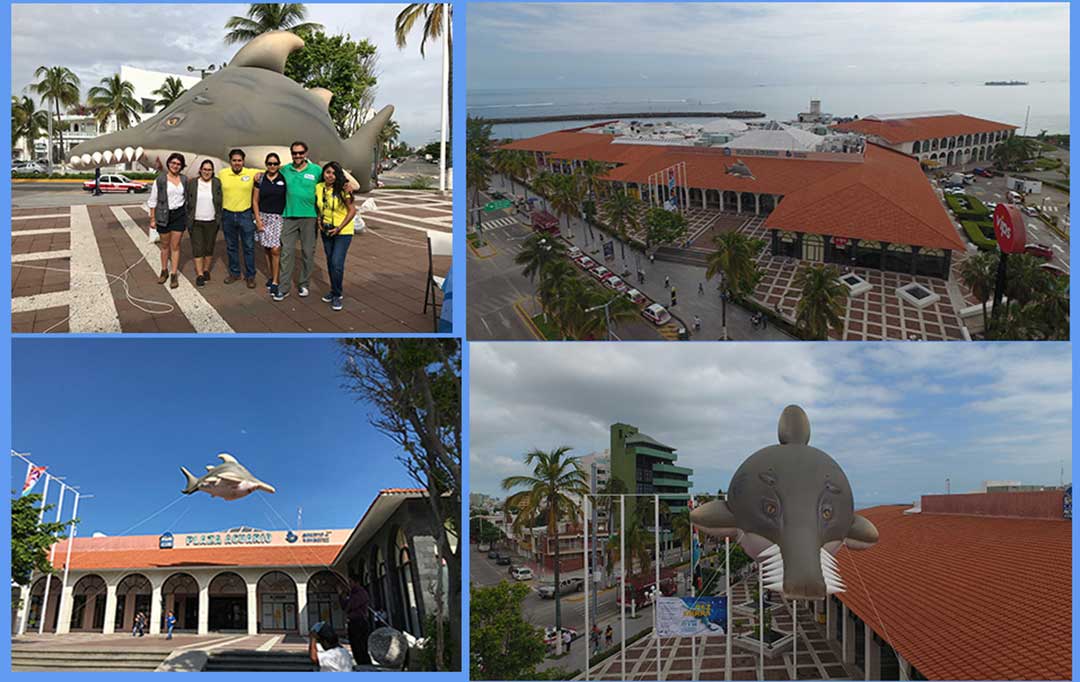
The giant sawfish balloon was very effective luring people into our International Sawfish Day 2-day event! Photo © Ramòn Bonfil
The main reason we chose the Veracruz Aquarium for ISD, is that this aquarium hosts the only known living small tooth sawfish in Mexico (although we have eDNA evidence that there are a few more hiding in the wild). This juvenile female was caught and kept alive by fishers in a northern Veracruz fishing village in 2016 and the next day it was brought to the aquarium. Since then, it has grown about 1 meter in length, is super healthy and beautiful, and is now the queen of the reef exhibit in the aquarium!
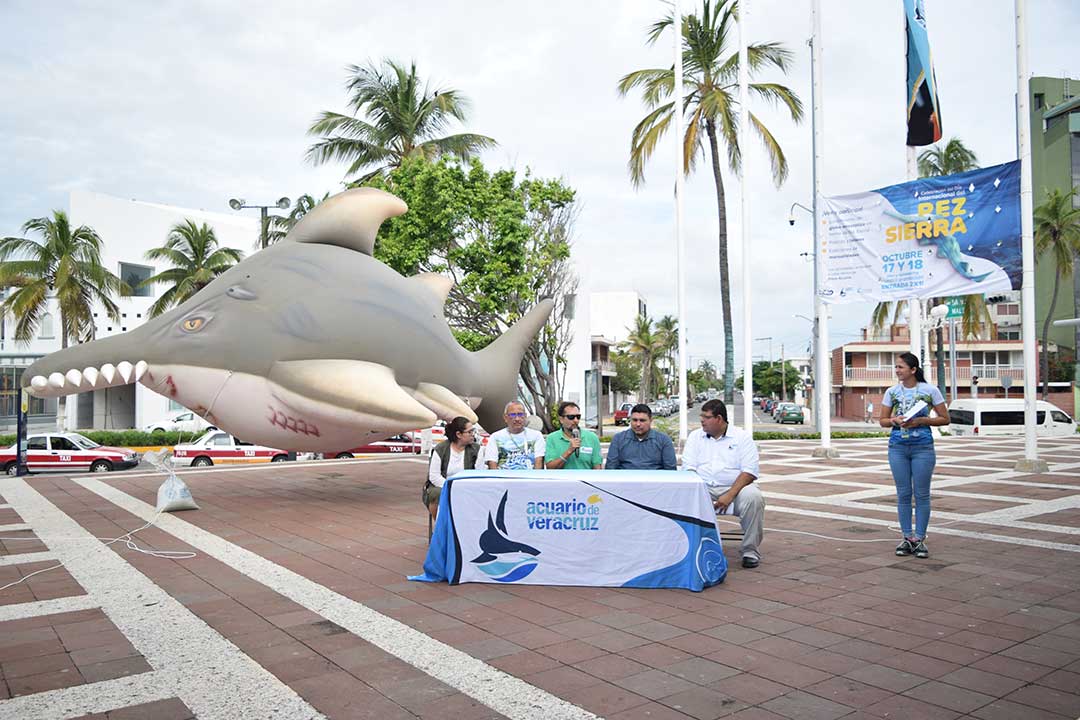
Inauguration ceremony for International Sawfish Day. Photo © Ramón Bonfil
Activities for International Sawfish Day started on October 17 with an inauguration ceremony including short speeches and the elevation of our flying sawfish, which was definitely a favourite of the crowds. This was followed by an intense session of TV, radio and newspaper interviews where Raúl Marín, the Aquarium’s curator of elasmobranchs and I, had to answer tons of questions to a multitude of reporters one by one for over an hour. Fortunately, this hard work gave us a huge opportunity window to publicize the conservation needs of sawfishes, the causes for their dwindling populations, and what needs to be done to help them recover.
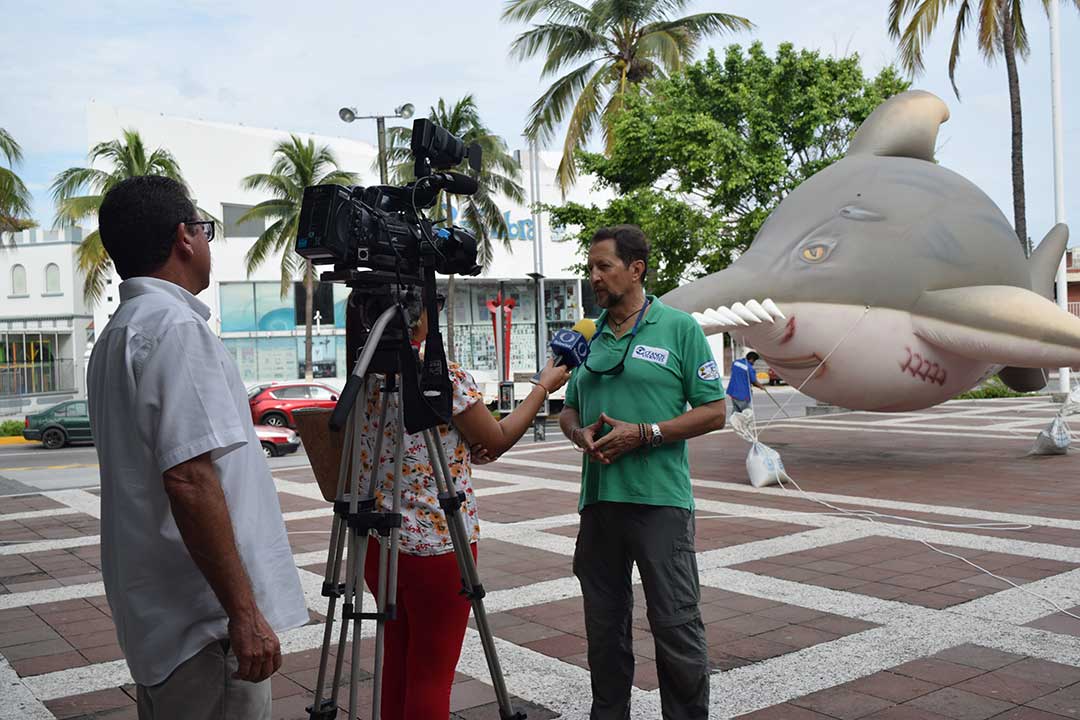
Ramón Bonfil, Executive Director of Océanos Vivientes, answering questions during a TV interview. Photo © Ramón Bonfil
Then, during the rest of that and the following day, our organizations offered all sorts of environmental education activities for the public free of charge. The Aquarium had a stand with shark and sawfish skeletal parts and other elasmobranch items, such as skate and shark egg cases, and they also organized a workshop for kids to build sawfish hats that were very much liked.
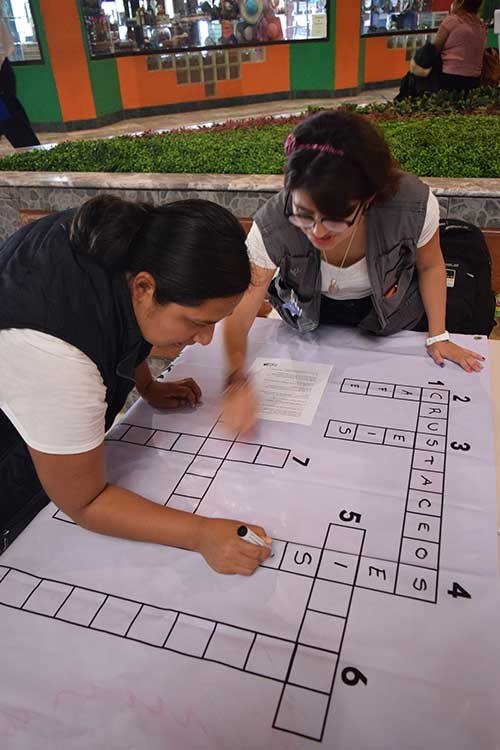
A person solving the sawfish biology and ecology crossword puzzle. Photo © Ramón Bonfil
Mar de áaKay had three very clever activities for people of all ages, a sawfish infographic puzzle for kids, a sawfish ecology and biology crossword puzzle for young people, and a Tetris-like word puzzle for adults with important information about sawfish habitat. They were busy all day attending participants one by one.
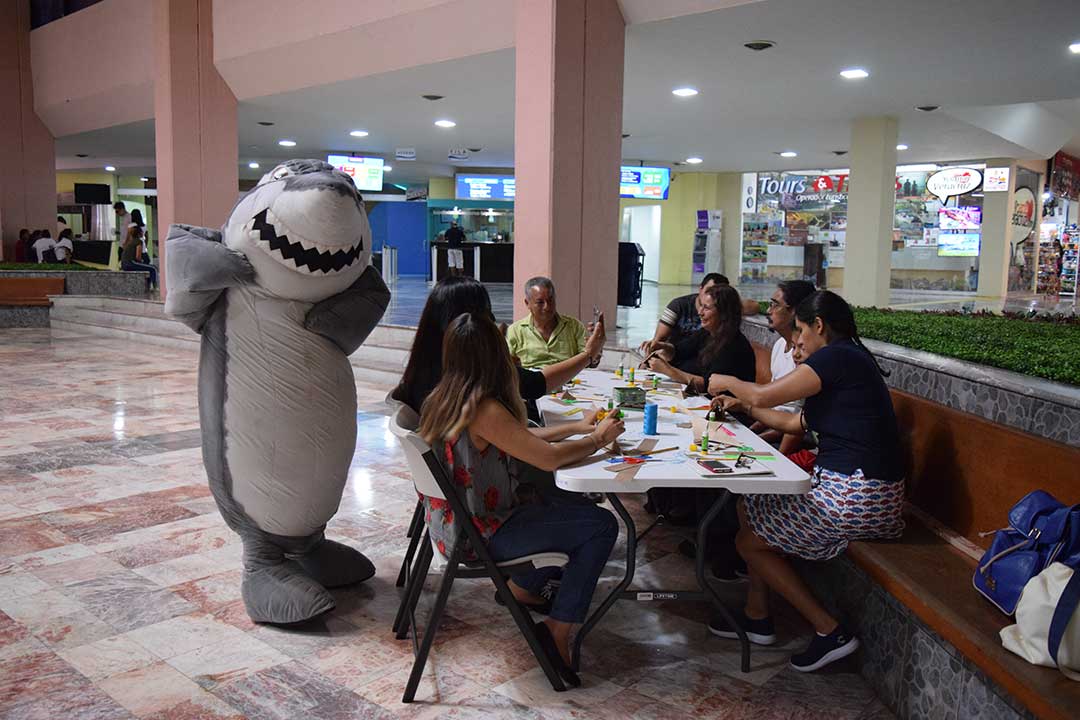
Even a shark wanted to take part of this workshop! Photo © Ramón Bonfil
One of the most popular workshops was organized by a very dedicated volunteer of my organization, Océanos Vivientes. She had young adults and adults building wonderful paper sawfish mobiles that everyone took home! This was the most involved activity taking up to 50 min each time, but even volunteers from the other organizations wanted to build their sawfish mobiles to hang at home!
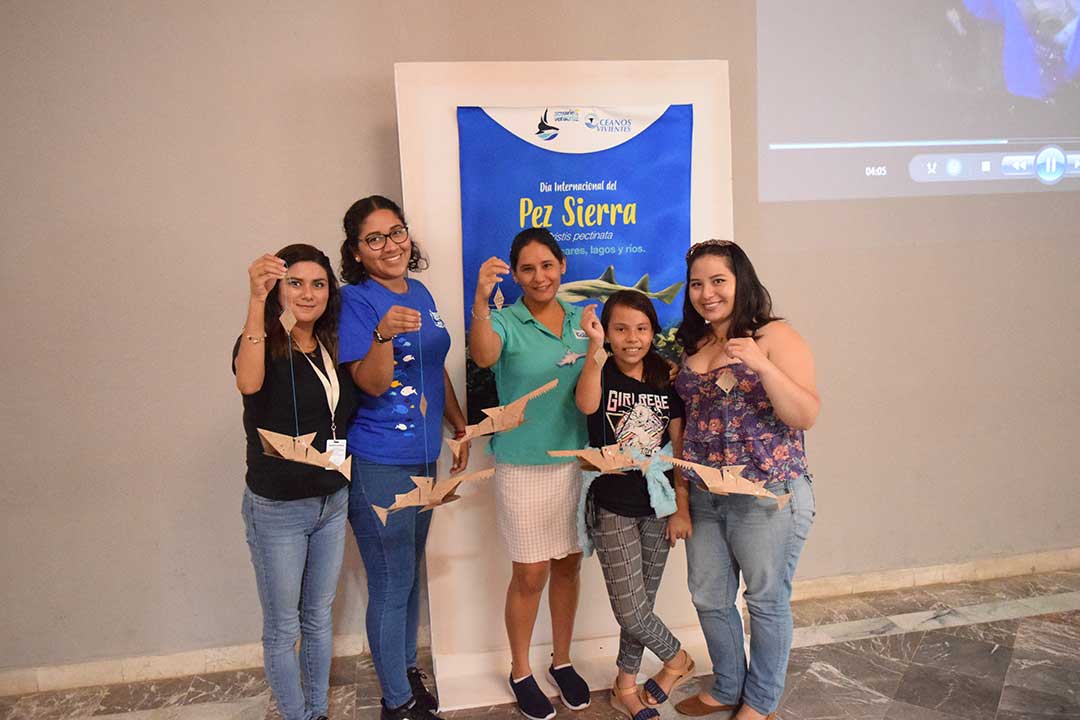
Happy participants with their instructor posing with their finished mobiles. Photo © Ramón Bonfil
Another of my volunteers delivered a very thorough education workshop aimed at younger kids that could be called a mini-course on elasmobranch biology and ecology. Kids sat for up to 40 min with him to listen to his explanations aided by infographics and solved different problems in specially-designed sheets that they took home.
Of course, in between activities, all the public was happy to receive lots of sawfish swag that the Dallas World Aquarium kindly gave away to us so that we could promote sawfishes among the public.
Another important part of our celebration was a series of five public conferences delivered by Raúl, one of my volunteers, and myself. Raúl talked about keeping a sawfish in the aquarium, how we rescued the juvenile female from conscious fishers in 2016 and how it was acclimatized and now displayed as one of the main attractions of the aquarium. My volunteer Uriel Mendoza delivered two interesting conferences on elasmobranch anatomy and on the significance of sawfishes to ancient Aztec cultures, based on the digging of over 70 sawfish rostra around the Mayor Temple of the Aztecs in Mexico City. As for me, I talked about sawfish biology and ecology, and about their conservation status and the research that Océanos Vivientes is doing to help sawfish recovery.
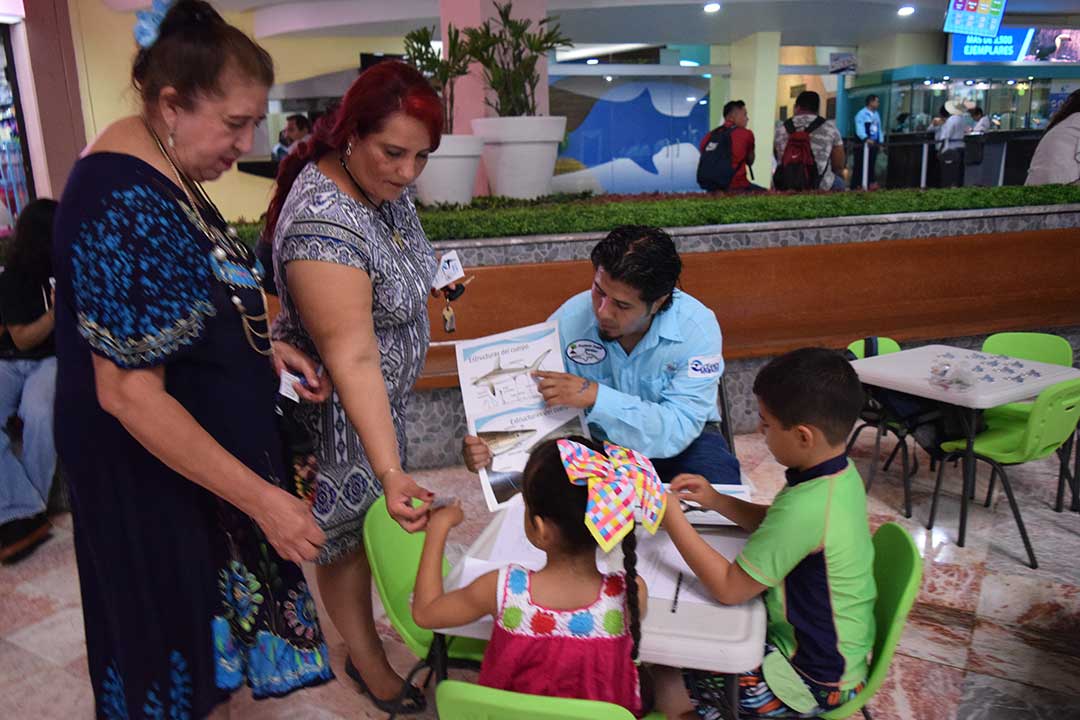
Uriel Mendoza of Océanos Vivientes teaching young kids about shark and ray biology and ecology. Photo © Ramón Bonfil
To end with another bang, celebrations finished with the aquarium announcing the winner of the selfie contest to finally choose a name for the princess of the aquarium, the female juvenile sawfish. And the winning name could not be better… her name is Pristila!
Months of preparation and 4 days of work away from home paid off! We had a reasonable in-person audience and a huge coverage in the media. Thus we feel our first outreach focused activity was a grand success. And to reward my hard work as the organizer of all this, I had a chance to dive with the lovely Pristila in her aquarium tank while we tried to get a reasonable measurement of how much she has grown in the last two years…
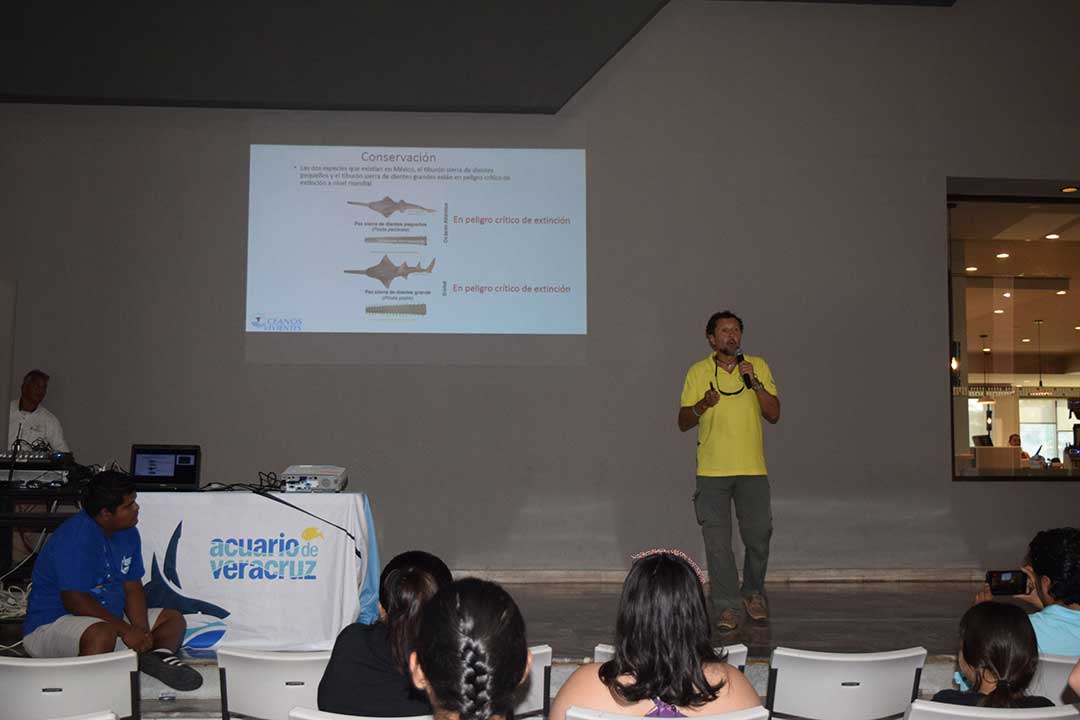
Ramón Bonfil of Océanos Vivientes delivering a conference about sawfish conservation efforts. Photo © Ramón Bonfil
